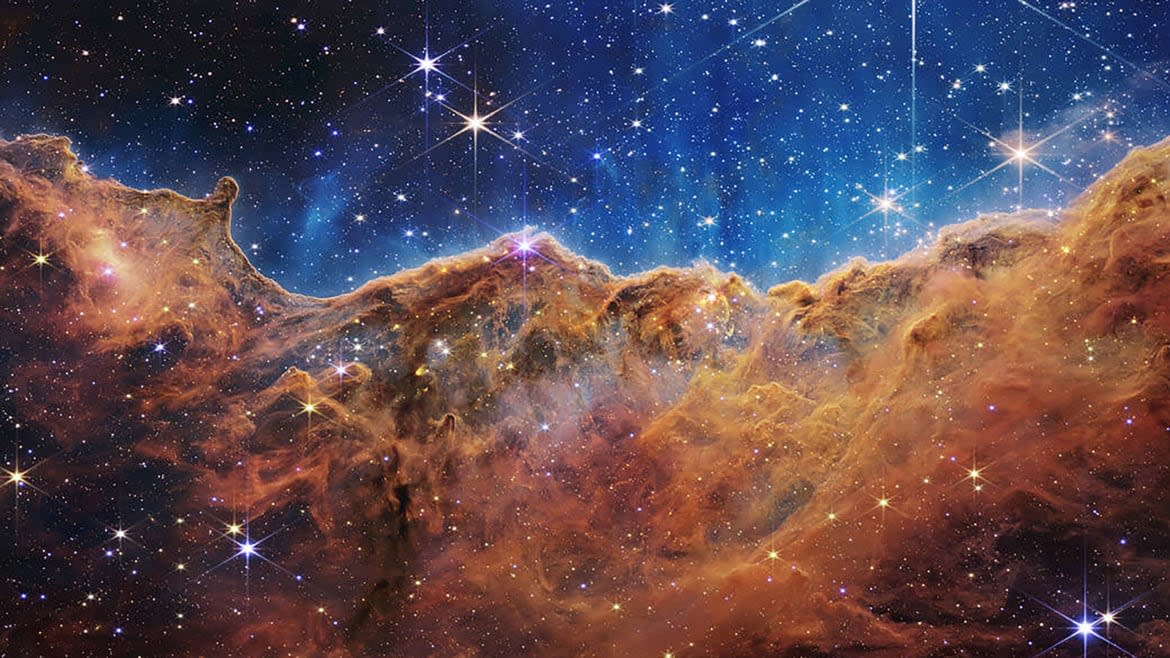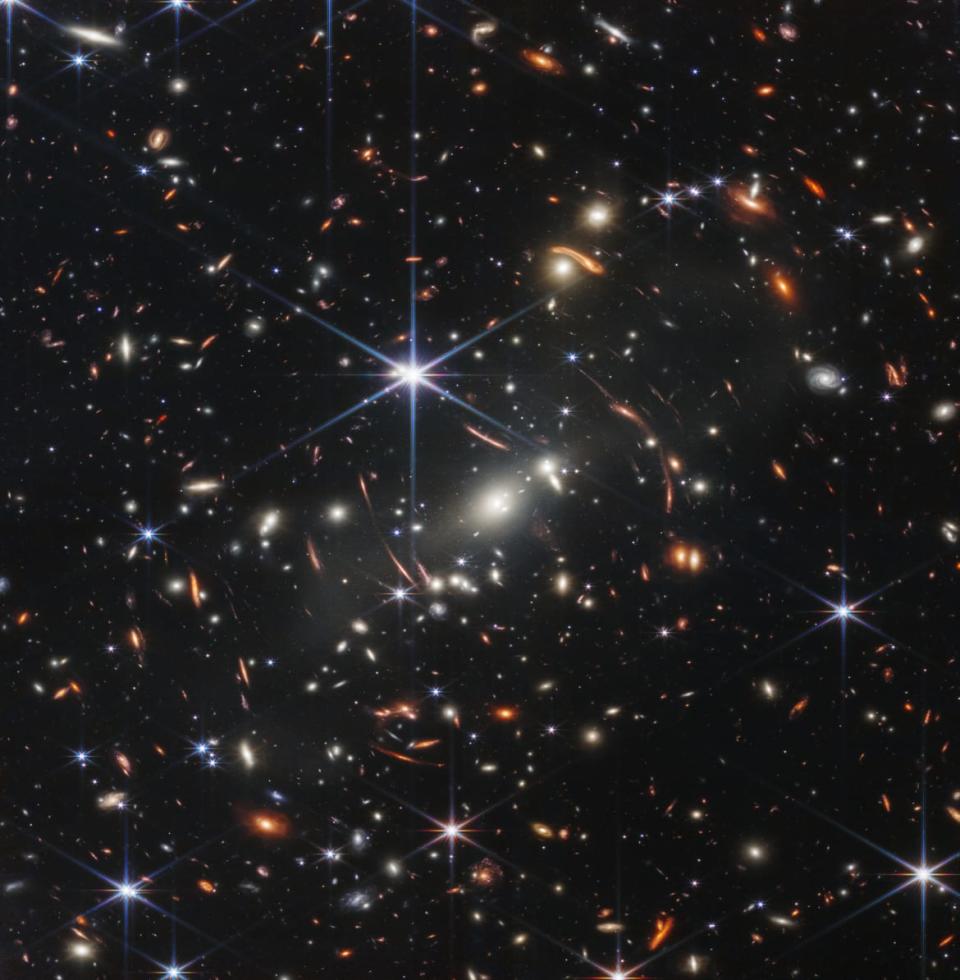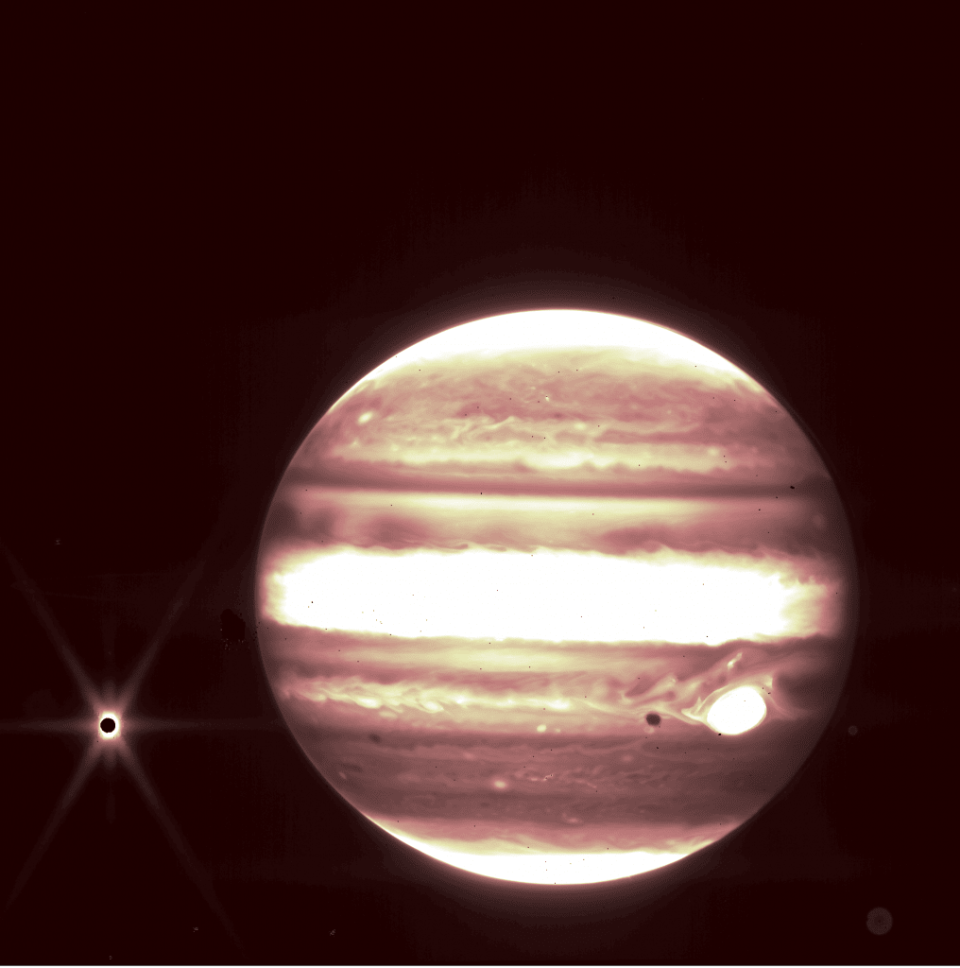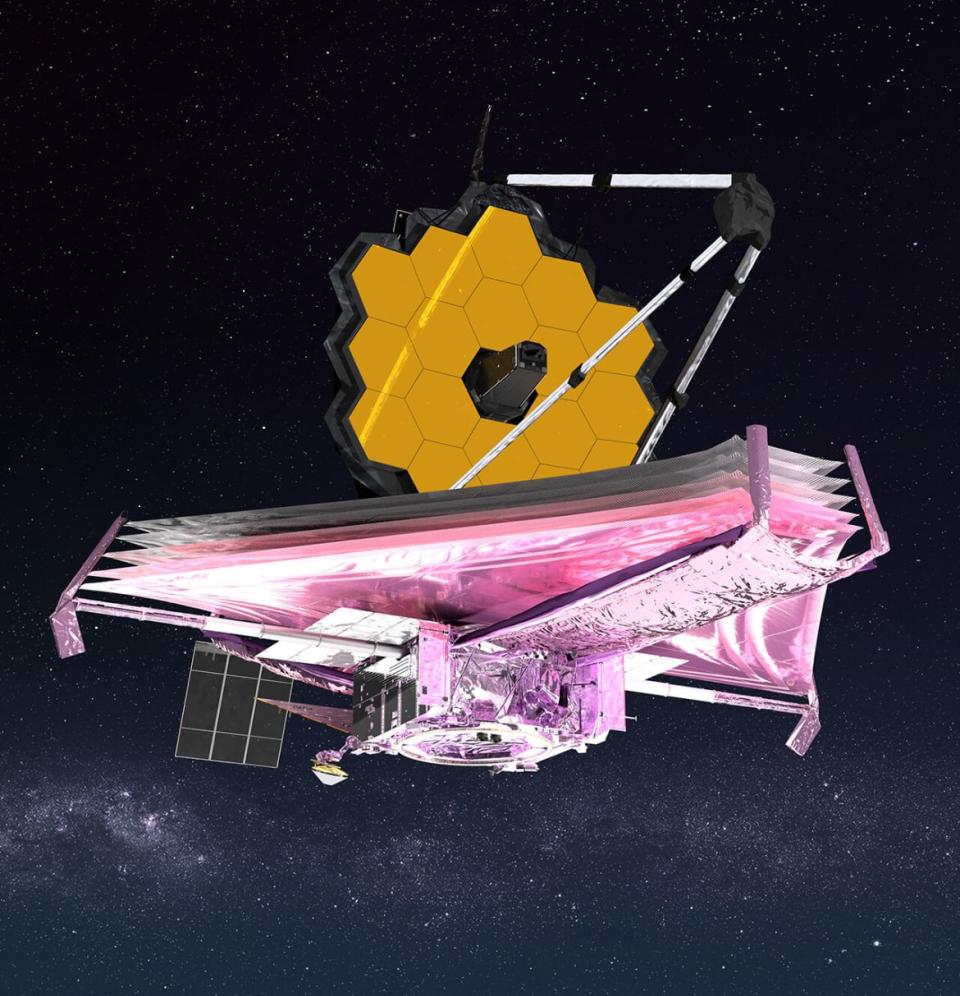The Next Phase of NASA’s James Webb Space Telescope Will Blow Your Mind

What. A. Week.
On Monday, President Joe Biden unveiled the first photo from the hotly anticipated James Webb Space Telescope—the most powerful observatory ever launched into orbit—showcasing a stunning galaxy cluster in full color. Not to be outdone, NASA released another four images the following day depicting star nurseries, galaxy groups, a particularly watery exoplanet, and a dying star.
While the images were all various levels of jaw-dropping, the most amazing part was that it was only the beginning. Webb is fueled up for 20 years—which means we have decades worth of stirring photographs and scientific discoveries ahead of us. Of course, that just begs the question: What’s next for Webb?
Quite literally, the entire universe as it turns out. In fact, despite how astonishing the latest images were, they’re actually nothing compared to what’s to come. Eric Smith, the program scientist for the JWST program at NASA, said as much in a press conference on Tuesday.
Meet the Kooks Who Think NASA’s James Webb Telescope Is a Giant Space Cannon
“They were more or less practice runs with the instruments,” Smith said, referring to the five images released. “We’re making discoveries and we really haven’t even started trying yet. So the promise of this telescope is amazing.”
While NASA hasn’t released a schedule of what the Webb is going to be looking at next, here are a few things we can expect from the space observatory in the coming year:
Sightseeing the Early Universe
Perhaps the biggest reason for the hype behind the Webb is the space observatory’s ability to peer at some of the earliest stars and galaxies ever formed. That means being able to observe celestial objects as they were shortly after the Big Bang nearly 14 billion years ago.
The image of the galaxy cluster SMACS 0723 debuted by Biden is one such example. Webb captured the light from the region as it appeared 4.6 billion years ago via an ultra-deep near-infrared survey. Using its Near Infrared Spectrograph—an instrument that separates infrared light by wavelength into a spectrum—the observatory was able to gather data from one of the youngest galaxies in the field—which turned out to have been within a billion years after the Big Bang.

And remember: This is just the beginning. One of Webb’s primary missions is to study the early universe. That means we’re only getting started finding some of the “youngest” space objects ever discovered. To that end, the entire JWST program mission is also focused on discovering how galaxies formed and evolved over eons. Its instruments will also provide a look at the lifecycle of stars as well—something the Hubble Space Telescope had trouble doing since it could only observe visible light.
Exploring Exoplanets and Solar Systems
One of the images released on Tuesday wasn’t a photograph of a celestial body at all. It was a graph that showed the measurement of water content in the atmosphere of a giant exoplanet dubbed WASP-96b.
That might sound a bit disappointing considering the other images, but it actually showcased an important feature of Webb: the ability to more deeply study and observe the atmosphere and conditions of exoplanets. This is crucial to find regions of space that might be hospitable for life.
Faraway objects aren’t the only place it’ll be looking either. Webb is also going to be turning an eye on our own solar system including places like Mars, Pluto, and Saturn to give us an even more detailed look at what’s in our own backyard. NASA even released an image captured by Webb of Jupiter yesterday using its primary imager, the Near-Infrared Camera.

Searching for E.T.
We can’t talk about a powerful space observatory without talking about the flying saucer-sized elephant in the room: aliens.
Since Webb can observe some of the most distant regions of space imaginable, many researchers are hoping that it can find hidden exoplanets that are suitable for life. These would be planets in the Goldilocks Zone, or the regions of solar systems that are just far away enough from their primary star for liquid water. In other words, they’re just right for life.
Some exoplanets that Webb could start exploring aren’t that far off either. There are a few Earth-sized planets in a system revolving around a star 40 light-years away, dubbed TRAPPIST-1. Olivia Lim, an exoplanet researcher at the University of Montreal, has inked some time to use Webb in the near future to explore TRAPPIST-1 and its planets—several of which are in the star’s Goldilocks Zone and represent some of our best opportunities to find signs of life
“The Trappist-1 system is unique,” Lim told AFP. “Almost all of the conditions there are favorable for the search for life outside our solar system.”

Fielding Proposals
Lim isn’t the only one sending proposals. Astronomers and scientists all over the world are clamoring to get a little time on the space observatory while they can.
Over the course of its roughly 20-year lifespan, the JWST program will have annual open calls for submissions by researchers of all strata to propose projects and experiments for the Webb to conduct. The Space Telescope Science Institute (STScI), which actually operates the observatory, will have final say in who gets chosen.
Think of it like auditions for your high school musical—but instead of getting casted in a crappy production of Into the Woods, you find out if you get to study 13 billion-year-old galaxies, witness the birth of the universe, and hunt aliens.
Webb’s operators have accepted 266 proposals for its first year of scientific observations, known as Cycle 1. One of the coolest aspects of this is that all of the projects accepted are online and easily accessible for your viewing pleasure. That means if you really want to know what Webb is going to be up to over the next year, you can click around on the STScI website and see for yourself.
Along with what we’ve already covered in this article, Webb will be taking a close look at a number of supermassive black holes, testing dark matter, and studying quasars.
Biden Reveals First Full-Color Images From NASA’s James Webb Space Telescope
Avoiding Catastrophe
While the Webb is orbiting roughly a million miles away from Earth, it won’t be alone. It has an army of engineers, scientists, and researchers on terra firma making sure that things run as smoothly as they should. It’s no mean feat either considering we can’t exactly send a repairperson up there if the worst case scenario does happen.
Hopefully, though, if all goes according to plan, we won’t have to worry about that at all. As the saying goes: “An ounce of prevention is worth a pound of cure.” To that end, NASA built Webb to be incredibly hardy and capable of withstanding the harsh, unforgiving elements of space. This includes tools like its sunshield, which reflects high amounts of sunlight away from sensitive electronics.
Put it another way: Webb won’t break because it was built to not break. This ethos was put to the test in May when a micrometeoroid struck the telescope. While there was minor damage, the design of Webb allowed it to withstand it and continue to operate.
While it might be a bit of cold comfort for some of us on Earth, you can sleep soundly knowing that Webb will continue to produce stunning images and even more amazing discoveries for the next 20 years. And even when it’s finished, it’ll have laid the groundwork for an untold amount of amazing science to be discovered for ages to come.
Got a tip? Send it to The Daily Beast here
Get the Daily Beast's biggest scoops and scandals delivered right to your inbox. Sign up now.
Stay informed and gain unlimited access to the Daily Beast's unmatched reporting. Subscribe now.

